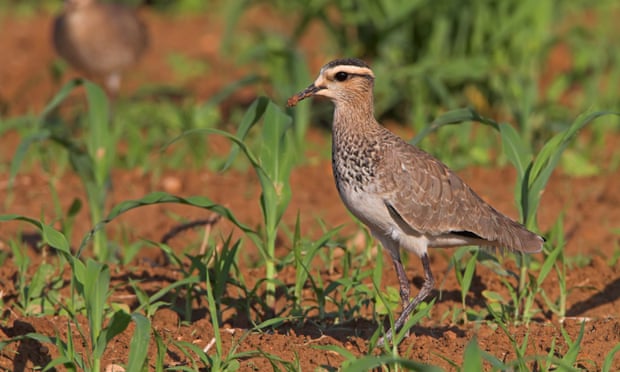New red list classifies 7.5% of all marine species as threatened with extinction in first full assessment of the continent’s oceanic biodiversity
About 40% of Europe’s sharks and rays are threatened with extinction, according to the authoritative red list’s first full assessment of Europe’s 1,220 marine species.
Where fish population trends could be measured, nearly a third were found to be in decline by the International Union for the Conservation of Nature (IUCN), which publishes the list. The IUCN found 7.5% of all the continent’s marine species at risk of extinction – a number that jumps to 10% when ‘near threatened’ species are counted too.
The findings came on the same day as the World Bank warned of the economic costs of overfishing and the UN general assembly agreed on the need for a new treaty to protect marine life in the high seas.
“It is alarming that many commercially and ecologically important species continue to be at risk in Europe,” said Simon Stuart, the chair of the IUCN’s species survival commission. “We need to take urgent action to reduce target and incidental catches of threatened species, and to set and enforce fishing quotas based on scientific understanding of population declines.”
The IUCN identified overfishing as the primary cause of the decline in marine biodiversity, followed closely by bycatches – accidental fish kills – coastal development, and pollution.
Bycatches have pushed blue sharks onto the IUCN’s near-threatened list, and Angelsharks to the verge of extinction. Once endemic to European waters, the group of sharks are now only found around the Canary Islands.
The IUCN’s new red list though shows that much-loved European fish such as Atlantic salmon, halibut and trout have been over-fished to the point of vulnerability. Turbot populations have fallen by nearly a third in the past three decades.

Atlantic salmon spawning in upstreams, Namsen river, Norway. Overfishing has made the species vulnerable. Photograph: Michel Roggo/IUCN
But some fish, including Atlantic cod and bluefin tuna, have seen stocks improve. Across Europe, catch limits were imposed on bluefin tuna in 2010, although they have since crept upwards as stocks began to recover. A 20% increase in quotas was agreed last December, against scientific advice.
Some 36 marine species in Europe are now fished according to their ‘maximum sustainable yield’, and the European commission has investigated more than 200 cases of suspected illegal fishing, leading to €8m (£6m) of fines. A European commission assessment earlier this week revealed that nearly one half of marine species in the Atlantic – and 93% of those in the Mediterranean – are not being fished sustainably.
Karmenu Vella, the EU’s environment commissioner, said the report contained worrying statistics but the cod and tuna recoveries showed: “The value of well-targeted actions to protect the biodiversity we depend on.”
At a conference in Lisbon on Thursday, a new World Bank report said that more sustainable fishing methods could make the industry worth an extra $80bn a year.
Professor Chris Costello, a contributor to the study, told the Guardian that over-fishing was unnecessarily jeapordising the livelihood of fishing communities as well as the integrity of ecosystems.
“We draw the lesson that granting rights to fisherman and their communities in the form of community cooperatives or individual transferable quotas gives them a long-term stake in the health of their fish stocks,” he said.
Kathryn Stack, the managing director of the Europeche trade association for the fishing industry said that Europe’s overfished stocks had fallen substantially from 2005.
“There is more to be done but we have to think about how they categorised these numbers,” she said. “If 7.5% of marine species are threatened, it suggests that 92.5% aren’t. Our fishermen have taken huge steps to become more sustainable, using innovative and more selective gear, talking part in sustainability schemes, and changing their fishing habits.”
Thursday also saw the UN general assembly introduce a resolution to develop a legally-binding treaty for the conservation of marine biodiversity on the high seas, which would be the first such pact in over two decades if it is adopted.
A separate report published today by Birdlife International showed that human activity is having a serious impact on land too, with several bird populations reported as going into freefall.

Sociable plover ( Vanellus gregarius) is on the IUCN’s critically endangered list. Photograph: Alamy
The data informed the EU’s state of nature report which, as the Guardian revealed last month, found that a third of Europe’s birds were either critically endangered, or nearly so. Using different baseline analyses, the Birdlife report reduced the number to a quarter.
Even so, 37 birds once common in the UK, such as lapwing, puffin and curlew are now close to dying out because of habitat loss, climate change and increasingly intensive farming.
Where remedial action has been taken under EU conservation laws, some charismatic species such as the Spanish imperial eagle and white-headed duck have seen population recoveries.
“Conservation works and many species have been brought back from the brink, but unfortunately a large number of species have become increasingly threatened,” said Christina Ieronymidou, one of the report’s authors.
“It would be tragic to imagine a world without puffins, curlews, turtledoves and oyster catchers.” .
http://www.theguardian.com/environment/2015/jun/03/40-of-europes-sharks-and-rays-face-extinction?CMP=Share_AndroidApp_Gmail
